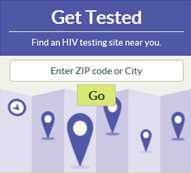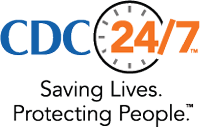African Americans/Blacks
Health disparities are differences in the incidence, prevalence, and mortality of a disease and the related adverse health conditions that exist among specific population groups. These groups may be characterized by gender, age, race or ethnicity, education, income, social class, disability, geographic location, or sexual orientation. These health disparities are one reason why HIV/AIDS, viral hepatitis, STDs, and TB take a greater toll in one population group over another. Find information about how these diseases affect African American/Black populations.
HIV/AIDS
In 2014, the estimated diagnosis rate for HIV cases in the United States was 13.8 per 100,000 population and 49.4 among blacks/African Americans. Of 222,185 estimated diagnoses of HIV infection in the United States and six dependent areas from 2010 to 2014, African Americans accounted for the following:
- 45% of the total
- 62% of women
- 64% of infections attributed to heterosexual contact
- 64% of children, ages < 13

In 2013, the death rate for blacks was higher (19.4 per 100,000) compared with any other racial ethnicity group (2.5 whites). In 2013, African Americans represented 47% of all estimated deaths of people ever diagnosed with HIV. (Note that deaths could be from any cause). A recent study showed that blacks diagnosed with HIV are less likely than other groups to be linked to care, retained in care, receive antiretroviral treatment and achieve adequate viral suppression.
African American Males
African American men accounted for 40% of HIV cases diagnosed among men in the United States and six dependent areas in 2014. A majority (78%) of African American men diagnosed with HIV contracted the disease through male-to-male sexual contact while 15% contracted HIV through heterosexual exposure.
African American Females
Among African American women in the United States and six dependent areas, heterosexual contact was the most frequently cited mode of transmission, accounting for 91% of cases diagnosed in 2014.
More Information:
Sexually Transmitted Diseases (STD)
Gonorrhea
In 2014, 55.4% of all reported cases of gonorrhea occurred among blacks. The rate of gonorrhea among blacks in 2014 was 405.4 cases per 100,000 population, which was 10.6 times the rate among whites (38.3). This disparity has changed little in recent years. This disparity was similar for black men (10.6 times) and black women (10.7 times).
Chlamydia
In 2014, the overall rate among blacks in the United States was 1,117.9 cases per 100,000, a 6.2% decrease from the 2010 rate of 1,167.5 cases per 100,000. The rate of chlamydia among black women was 5.7 times the rate among white women (1,432.6 and 253.3 per 100,000 women, respectively). The chlamydia rate among black men was 7.3 times the rate among white men (772.0 and 105.5 cases per 100,000 men, respectively).
Syphilis
 During 2010–2014, the rate of primary and secondary (P&S) syphilis among blacks increased 7.8% (from 17.8 to 119.2 cases per 100,000 population). In 2014, 38.1% of all cases reported to CDC were among blacks.
During 2010–2014, the rate of primary and secondary (P&S) syphilis among blacks increased 7.8% (from 17.8 to 119.2 cases per 100,000 population). In 2014, 38.1% of all cases reported to CDC were among blacks.
The overall 2014 rate for blacks was 5.4 times the rate for whites, while the 2013 rate was 5.6 times the rate for whites. In 2014, the rate of P&S syphilis among black men was 5.3 times the rate among white men; the rate among black women was 9.2 times the rate among white women.
In 2014, the rate of congenital syphilis was 38.2 cases per 100,000 live births among blacks. Race/ethnicity for cases of congenital syphilis is based on the mother’s race/ethnicity. This rate was 10.3 times the rate among whites (3.7 cases per 100,000 live births).
More Information:
- STD Topic Site
- STDs and Health Disparities
- STD Surveillance Report
- STDs in Racial and Ethnic Minorities
Viral Hepatitis
Acute Hepatitis A
During the past 5 years, there has been little difference between the rates of acute hepatitis A among white non-Hispanics and black non-Hispanics. The 2014 rates for these groups were 0.28 and 0.20 cases per 100,000 population, respectively.
Acute Hepatitis B
In 2014, the rate of acute hepatitis B was highest for Black non-Hispanics (0.88 cases per 100,000 population).
Acute Hepatitis C
During 2002–2011, the incidence rate of acute hepatitis C remained below 0.5 cases per 100,000. The rate increased to 0.6 cases per 100,000 population in 2012 and to 0.7 cases per 100,000 population in 2013 and 2014. The rate of hepatitis C among Black non-Hispanics decreased 5% between 2013 and 2014 (from 0.2 cases per 100,000 in 2013 to 0.19 case per 100,000 population in 2014).
More Information:
Tuberculosis (TB)
In 2014, 87% of all reported TB cases occurred in racial and ethnic minorities. Non-Hispanic blacks or African Americans accounted for 21% of TB cases in 2014. African Americans make up approximately 14% of the U.S. population, but accounted for 37% of TB cases in U.S.-born persons. Overall, 9,421 TB cases were reported to CDC from the 50 states and the District of Columbia in 2014.
More information:
- TB in Blacks Fact Sheet – HTML, PDF
- Tuberculosis Topic Site
- TB in Blacks
- Tuberculosis Surveillance Report
- Page last reviewed: October 4, 2016
- Page last updated: February 1, 2017
- Content source:


 ShareCompartir
ShareCompartir


